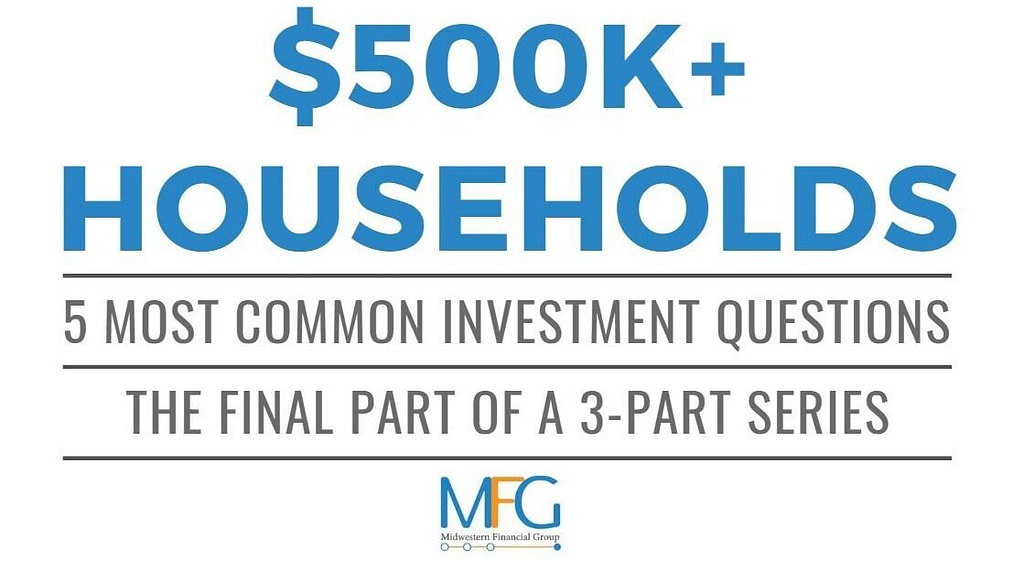
April is Financial Literacy Month.
In observance of these 30 days, we have included below four money-related lessons we at MFG believe every person should know. This is not an exhaustive list, or even the ‘Top 4’ necessarily. However, these are four principles that jumped out to us because they are often misunderstood or because we have recently discussed them.
Let’s get to it.
YOUR HOME IS NOT AN INVESTMENT.
Using data from the Federal Housing Finance Authority, a home purchased in Iowa for $100,000 in 1991 would be worth $230,420 at the end of 2016 (remember this is the average home in Iowa). That is a 3.26% annual return. Inflation alone would have grown $100,000 to $180,415.30.
Shelter, one of Maslow’s most basic needs, is necessary. However, let’s assume the $100,000 is invested in the S&P 500 in 1991 (ignoring transaction costs and taxes). What is the balance at the end of 2016? $1,137,163.
Even if a $100,000 home was purchased in Washington D.C., the best home value return of the period, it would have grown to $497,960.
The bottom line: although your home value will likely appreciate, it is far below the expected return of the stock market. Thus, your home should not be considered an alternative to retirement savings.
TIMING IS EVERYTHING. ALSO 99% LUCK.
In the illustration above we used 1991 through 2016 as our timeframe because that is when average home data was available. It also coincided with the 1990’s bull market. This inflated the ending value, right?
Not really. To compare apples to apples, we analyzed rolling 26 year periods in the S&P 500 dating back to 1926. If you had invested $100,000 in the S&P 500 at the beginning of 1975, 26 years later your $100,000 would have grown to $4,713,321, an almost 16 percent annualized return.
What if you didn’t have $100,000 to invest in 1975? What if your grandma left you the money a year later? $100,000 invested at the beginning of 1976, one year later, would have grown to $3,032,811. I don’t know about you, but I think ~$1,700,000 is a disparity.
Would the person who invested one year earlier than you be smart enough to admit their higher ending value was entirely because of luck?
I’LL MAKE A LOT MORE MONEY WHEN I GET OLDER. I’LL SAVE THEN.
Let’s assume that you’re 35 years old, want to retire at 65 (30 years from now), have $50,000 in a 401(k) and that you are adding $10,000 per year to that account.
If your portfolio returns 6% per year, after 30 years you will be the owner of a $1,077,756 portfolio.
What if you decide to start saving at 45 instead? You still have $50,000 in a 401(k), but now you only have 20 years to save because you still want to retire at 65. For an ending portfolio value of $1,077,756, assuming 6% annual returns, you would need to save $24,939 per year or almost $15,000 more than what was required of you at age 35.
Given you can’t control sequences of returns, do you want to leave your retirement future up to Mr. Market generating large returns? If not, save more money earlier in life.
WE’RE ALL EMOTIONAL, INCLUDING YOU.
Here’s a just a few biases to watch out for:
- Self-control bias:
- How hard is it for you to save money, i.e. to make the tough decision to pay yourself first? Self-control bias is why we eat the second bowl of ice cream and why the median U.S. family has only roughly $5,000 in retirement savings.
- Overconfidence bias:
- “Me? Oh yea, I can outperform the stock market. I can pick stocks that double. I can manage my own portfolio. This stuff is easy.” Often these investors underestimate the portfolio risk that is leading to these returns, among other concerns.
- Loss aversion bias:
- Investors feel more pain losing $10 than joy when winning $10. Let’s go back to our 26-year rolling returns. If an investor buys $100,000 worth of the S&P 500 at the beginning of 1969, they would have experienced losses of 8.24%, 14.31%, and 25.90% in 1969, 1973 and 1974, respectively. After 1974, the investor has had enough. He decides to pull his portfolio (now $81,844) out of the market because he does not want to lose anymore. In 1975, the S&P 500 returned 37%. Reluctantly the investor put his money back into the market at the beginning of 1976, seeing the returns from 1975. What is the portfolio value in 1994? $890,613. Had he stayed invested in 1975, his ending portfolio value would have been $1,220,096.
PLANNING AND INVESTING ARE HARD. BUT, ANYTHING WORTH SACRIFICING FOR IS TOUGH. #LETSGO
Disclaimer: Past returns are not indicative of future gains.
· Inflation calculator: https://www.bls.gov/data/inflation_calculator.htm
· ‘State of American Retirement’ http://www.epi.org/publication/retirement-in-america/#charts
· S&P 500 return data came from Aswath Damodaran’s website: http://pages.stern.nyu.edu/~adamodar/



